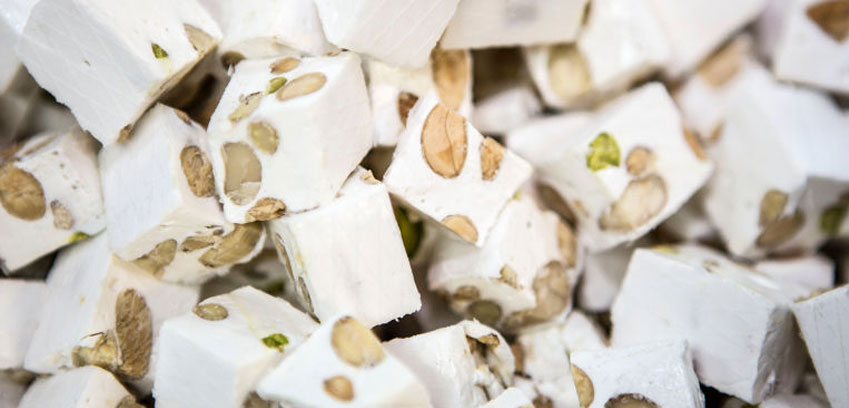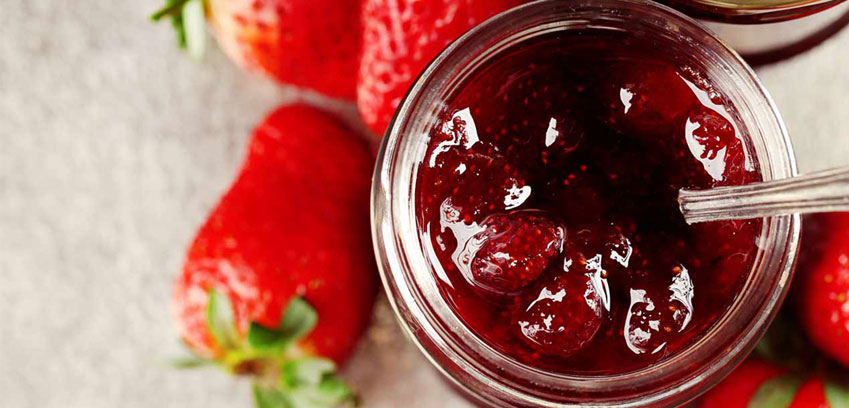Heavenly Persian Nougat

10 Turmeric Benefits: Superior to Medications?
April 19, 2017
7 Top Reasons to Eat Walnuts
April 24, 2017Traditional Persian nougat is one of the world’s oldest and most beautiful confections. It may also be one of the world’s most unusual delicacies.
Commonly known as gaz, this sumptuous nougat originated in Isfahan, a province in Central Iran that was so grand it twice served as the capital of Persia. The name gaz comes from the Persian gaz-angebin, meaning “sap of angebin”. Angebin is a kind of wild tamarisk tree that grows in the Zagros Mountains in Isfahan. Gaz is often assumed to be the sap of that tree. Gaz is also called manna, just like the food sent from heaven in the Abrahamic texts.
A couple hundred years ago, botanists discovered that this manna isn’t tree sap. And, it doesn’t really come from heaven. Instead, it is the exudate of an insect called the tamarisk manna scale. These insects live for about a year, spending their entire lives on the same tamarisk tree. The females produce gaz by feeding on the tree and then releasing from their bodies a milky and sweet thick liquid that sticks on the spiny tree branches. This gaz dries to a solid when exposed to the air.
The threadlike gaz is harvested from August through mid-October. The harvesters beat or shake the bushes and collect the falling gaz on cloths spread on the ground or in bowls made of animal skins. The gaz then passes through a sieve to separate out unwanted particles like leaves and rocks.
Now it’s time for the confectioners to take over. The dry gaz is boiled so that it becomes liquid again, and then it is strained. Because the harvesting is so labor intensive and demand for it exceeds production, gaz is expensive. To make more gaz at a lower price, confectioners often blend equal amounts of sugar and gaz. While the gaz is soft and sticky, it is blended with egg whites and ingredients native to Iran, like fruits, nuts, and spices. Families pass the recipes down through generations, with precise formulas being guarded secrets.
The old-fashioned way to serve Persian nougat is in round pieces that are about 2 inches in diameter and up to ½-inch thick. A modern presentation is to serve the nougat cut into smaller rectangles. Although many of the modern nougat recipes substitute sugar and corn syrup for gaz, the difference in taste is not very significant. The sweet flavor of the nougat with either formulation remains soft and delicate.
Depending on the ingredients mixed in, Persian nougat can have a subtle rose flavor or a savory, yet pungent, profile. Gaz can be different colors – it can be white, or it can become yellow because of the addition of spices like saffron. Even with different ingredient combinations, two things always remain the same with gaz: the unusual quality of being both brittle and chewy and the unmistakable sweetness that comes from its naturally high fructose content.
Celebrations such as Nowruz, the Persian New Year, feature gaz. Because Nowruz falls on the Spring Equinox, it has always been a beautiful celebration strongly connected to the bounty of native Persian foods like nuts and spices. This nougat is a perfect confection to highlight the breathtaking diversity of Persian crops and plants because it is often made using delicious pistachios and precious Iranian spices such as saffron and cardamom. During the Nowruz holiday, family and friends visit each other’s homes and, typically, the host offers fruits and sweets to their guests. Served with sherbet or tea, gaz is a favorite delicacy. Gaz is a much-appreciated gift as it helps to ensure that a household will have ample snacks to serve to all holiday visitors.
Exotic and delicious, Persian nougat is just as delightful to taste as it is to see. This traditional confection, made with the rare delicacy of a tiny insect’s honeydew, has been popular for centuries. Instantly recognizable by its spongy consistency and plush sweetness, gaz is a heavenly confection to enjoy with tea and friends.




